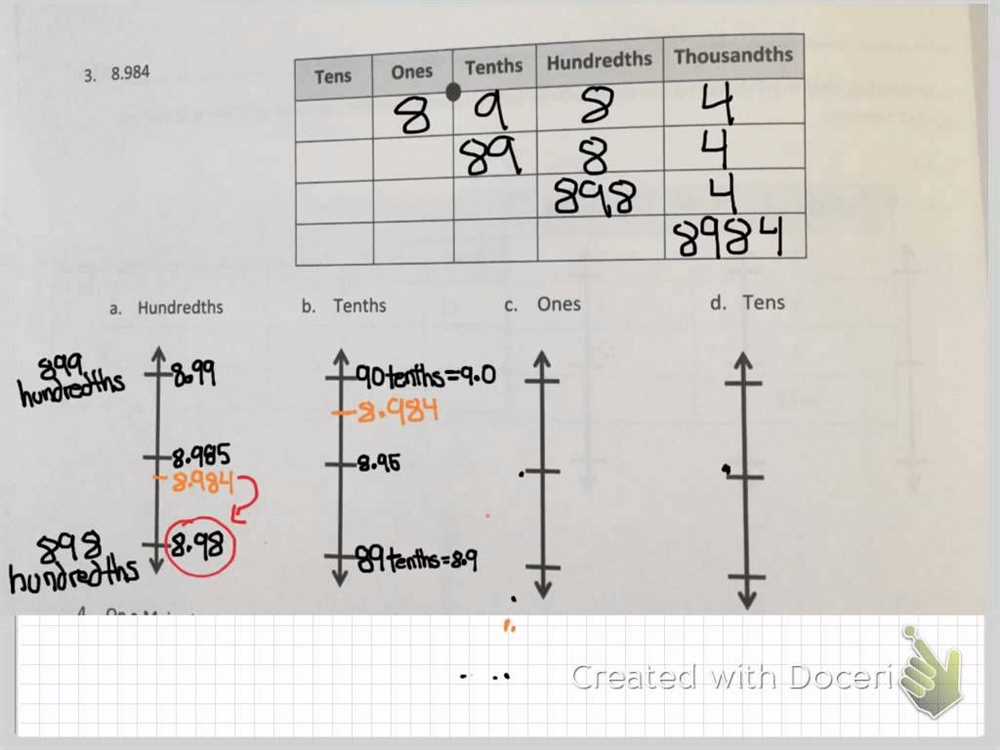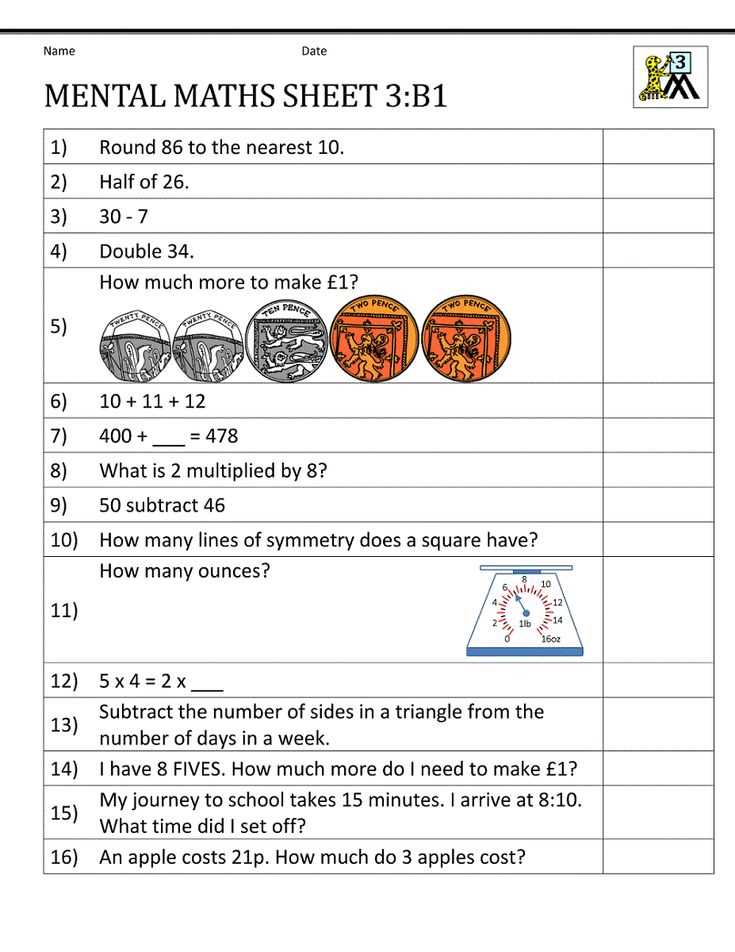
In this lesson, we will be learning how to multiply using mental math techniques. Mental math is a skill that allows us to perform complex calculations in our mind, without the need for pen and paper or a calculator. This can be useful in situations where you don’t have access to these tools, or if you want to quickly estimate the answer to a multiplication problem without going through the standard algorithm.
In this homework assignment, we will be focusing on multiplying two-digit numbers by single-digit numbers using mental math strategies. This will build upon the skills we learned in the previous lesson and reinforce our ability to perform quick mental calculations.
The answer key for this homework assignment will provide step-by-step explanations for each problem, allowing you to understand the mental math techniques used to arrive at the correct answer. By practicing these techniques, you will become more proficient in mental multiplication and be able to tackle more complex problems in the future.
Mental math techniques for multiplication
Mental math techniques for multiplication are strategies that allow individuals to perform multiplication calculations quickly and efficiently in their heads. These techniques can help improve mathematical fluency, problem-solving skills, and overall number sense. With practice, anyone can develop these mental math techniques and become proficient in mental multiplication.
Break it down: One mental math technique for multiplication is breaking down larger numbers into smaller, more manageable components. For example, instead of multiplying 48 by 7, you can break it down into (40 x 7) + (8 x 7). This allows you to mentally calculate the multiplication of smaller numbers and then add the results together.
Use known facts: Another mental math technique is using known facts to simplify multiplication calculations. For example, if you know that 6 x 8 equals 48, you can use this information to solve related multiplication problems. If you need to calculate 6 x 9, you can take the known fact of 6 x 8 and add another group of 6 to get the answer of 54.
Estimate and adjust: Estimation is another useful mental math technique for multiplication. You can round numbers to the nearest tens or hundreds and perform mental calculations based on these rounded values. Then, adjust the final answer to account for the rounding. This technique can be particularly helpful when multiplying larger numbers.
Visualization: Visualization is a powerful mental math technique for multiplication. By picturing the numbers and their relationships in your mind, you can manipulate them more easily. For example, if you are multiplying 3 by 4, you can visualize a rectangle with 3 rows and 4 columns and count the total number of cells to get the answer of 12.
Mental math techniques for multiplication can be useful in various contexts, such as everyday calculations, math competitions, and exams. By practicing these techniques regularly, individuals can become more confident and efficient in their mental multiplication skills.
Lesson 2: Multiplying two-digit numbers by a one-digit number
In lesson 2 of the Multiply using mental math series, we will be focusing on multiplying two-digit numbers by a one-digit number. This skill is essential in solving more complex multiplication problems and can be an efficient way to perform calculations mentally.
When multiplying two-digit numbers by a one-digit number, it is important to remember the multiplication properties we learned in lesson 1. For example, the commutative property states that the order of the numbers being multiplied does not affect the result. So whether you multiply the two-digit number first or the one-digit number first, the answer will be the same.
In order to mentally multiply two-digit numbers by a one-digit number, we can break down the problem into smaller, more manageable steps. One strategy is to break down the two-digit number into its tens and ones place values. We can then multiply each part individually and add the results together.
For example, let’s multiply 32 by 4. We can break down 32 into 30 and 2. Then we multiply 30 by 4, which equals 120, and multiply 2 by 4, which equals 8. Finally, we add 120 and 8 together to get a final answer of 128. This method allows us to mentally calculate the multiplication without the need for written calculations.
By practicing and familiarizing ourselves with these strategies, we can become more proficient in mentally multiplying two-digit numbers by a one-digit number. This will not only save time in our calculations but also improve our overall math skills.
Step-by-step guide for mental multiplication

Mental math, or the ability to perform calculations in your head without the use of paper or a calculator, is a valuable skill to have. One important aspect of mental math is mental multiplication, which allows you to quickly multiply numbers without the need for extensive written calculations. Here is a step-by-step guide to help you master mental multiplication:
1. Break down the numbers:
Start by breaking down the numbers you want to multiply into simpler components. For example, if you want to multiply 24 by 35, you can break it down into (20 + 4) and (30 + 5).
2. Multiply the components:
Multiply the components separately. In the example above, multiply 20 by 30, which equals 600, and multiply 20 by 5, which equals 100. Then, multiply 4 by 30, which equals 120, and multiply 4 by 5, which equals 20.
3. Add the products:
Add the products of the components together. In the example above, add 600, 100, 120, and 20 together to get a final answer of 840.
This step-by-step guide can help you break down and calculate multiplications mentally. With practice, you can improve your mental multiplication skills and perform calculations quickly and accurately.
Practice exercises for multiplying two-digit numbers by a one-digit number

In order to improve your mental math skills, it is important to practice exercises that involve multiplying two-digit numbers by a one-digit number. By doing so, you will become more confident and proficient in performing calculations in your head.
One useful method for multiplying two-digit numbers by a one-digit number is the traditional method of long multiplication. To practice this method, you can start by choosing random two-digit numbers and multiplying them by a one-digit number. Remember to carry over any tens when adding the partial products.
For example, let’s multiply 34 by 5 using long multiplication:
| 3 | 4 | ||
| x | 5 | ||
| — | — | — | |
| 1 | 7 | ||
| + | 1 | 0 | |
| + | 1 | 0 | |
| — | — | — | — |
| 1 | 7 |
Therefore, 34 multiplied by 5 equals 170. Practice similar calculations by choosing different two-digit numbers and one-digit numbers to further develop your skills. Remember to keep track of any carrying that may be required.
Another method for multiplying two-digit numbers by a one-digit number is the distributive property. This method involves breaking down the two-digit number into its tens and ones, multiplying each part separately, and then adding the results together. For example, let’s multiply 47 by 3 using the distributive property:
47 can be split into 40 (4 tens) and 7 (7 ones). Multiplying 40 by 3 gives us 120, and multiplying 7 by 3 gives us 21. Adding these two results together, we get 141. Hence, 47 multiplied by 3 equals 141. Practice this method by choosing different two-digit numbers and one-digit numbers to multiply together.
By practicing these exercises and techniques, you will gradually improve your mental math skills and become more proficient at multiplying two-digit numbers by a one-digit number.
Answer key for homework assignment

In this lesson, students were given a homework assignment on multiplying using mental math. The assignment consisted of various multiplication problems that required students to use their mental math skills to find the answers.
The answer key for the homework assignment is provided below:
- Problem 1: 2 x 8 = 16
- Problem 2: 5 x 6 = 30
- Problem 3: 9 x 4 = 36
- Problem 4: 7 x 3 = 21
- Problem 5: 3 x 9 = 27
These are the correct answers for the homework assignment. Students should review their answers and compare them to the answer key to check for accuracy. If any mistakes were made, students should take note of the error and work on improving their mental math skills for future assignments.